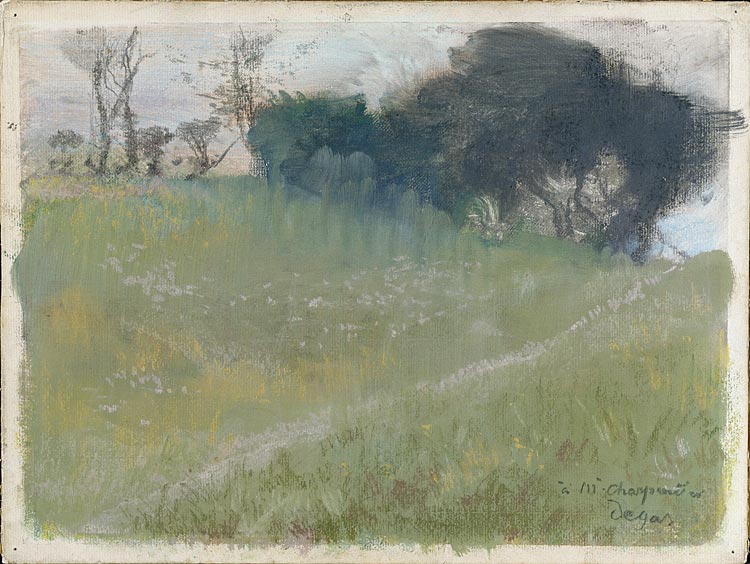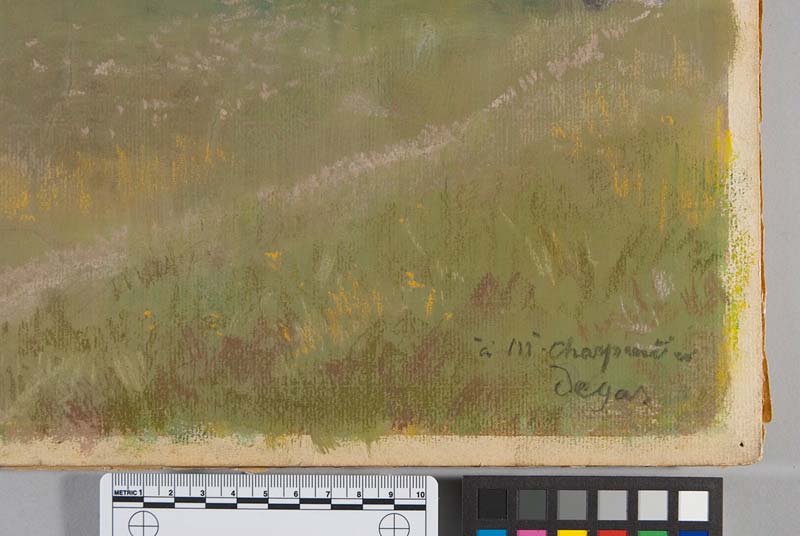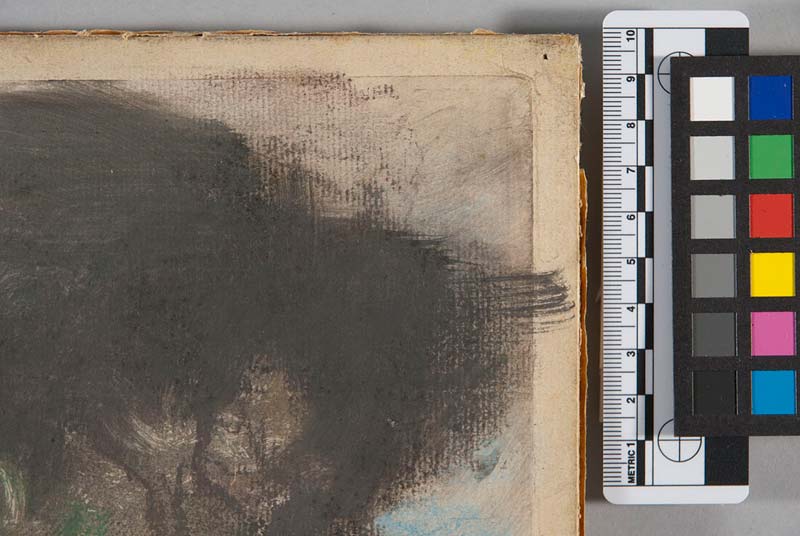 Edgar Degas
Edgar Degas
Landscape with Path Leading to a Copse of Trees, ca. 1890–92
Pastel over monotype in thinned oil paint on laid paper mounted to cardboard
Signed and inscribed at lower right in charcoal, à M. Charpentier / Degas
Sheet size: 10 5/8" x 14 1/8"
Plate size: 9 7/8" x 13 3/8"
Thaw Collection
In the early 1890s, when Degas' work became increasingly less naturalistic, he produced a series of pure landscapes that freely interpret the scenery he encountered on his way to visit the painter and printmaker Pierre-Georges Jeanniot in the village of Diénay, near Dijon. There Degas produced about fifty monotypes, which he enhanced with vivid pastel work.
The image was built up in layers of carefully applied media, a disciplined approach similar to traditional pastel and oil painting practice in which too much blending can result in muddied colors.
As seen in Figure 1, a salmon-colored thinned oil paint was brushed in an almost continuous layer onto a metal intaglio plate, with lighter areas reserved for the sky in the upper left. Basic compositional motifs, such as the horizon line and the silhouetted foliage, were also roughly indicated with oil paint. The plate was then placed in the moving bed of an intaglio press with a sheet of mould-made paper, resembling Ingres paper, positioned on top of it, followed by soft wool felts. Then, according to Degas' printer friend, Pierre-Georges Jeanniot, Degas cried, "What a terrifying moment! Go ahead! Start turning!" The plate/paper/felt sandwich passed under the crushing force of the intaglio cylinder, which forced the paper around the contours of the metal plate, thereafter defining the composition's borders. The freshly produced print was allowed to dry, probably by tacking it at all four corners to a wooden board face out.
The crudely depicted landscape was then further defined by vigorously applied strokes of thinned oil paint. In Figure 2, an exuberant brush stroke escaped the boundary of the platemark. Finally, details of the landscape such as the grasses in the foreground and the diagonal foot-worn path were elucidated using economical strokes of soft pastel, which, when dragged across the ribbed surface of the laid paper, produced staccato highlights in relief.
Owing to its vulnerable surface, the print was probably mounted soon afterwards to a heavy cardboard faced with deep blue paper, typical of nineteenth-century French mounting studios.
This post was created in conjunction with the exhibition Degas: Drawings and Sketchbooks on view September 24, 2010, through January 23, 2011.


